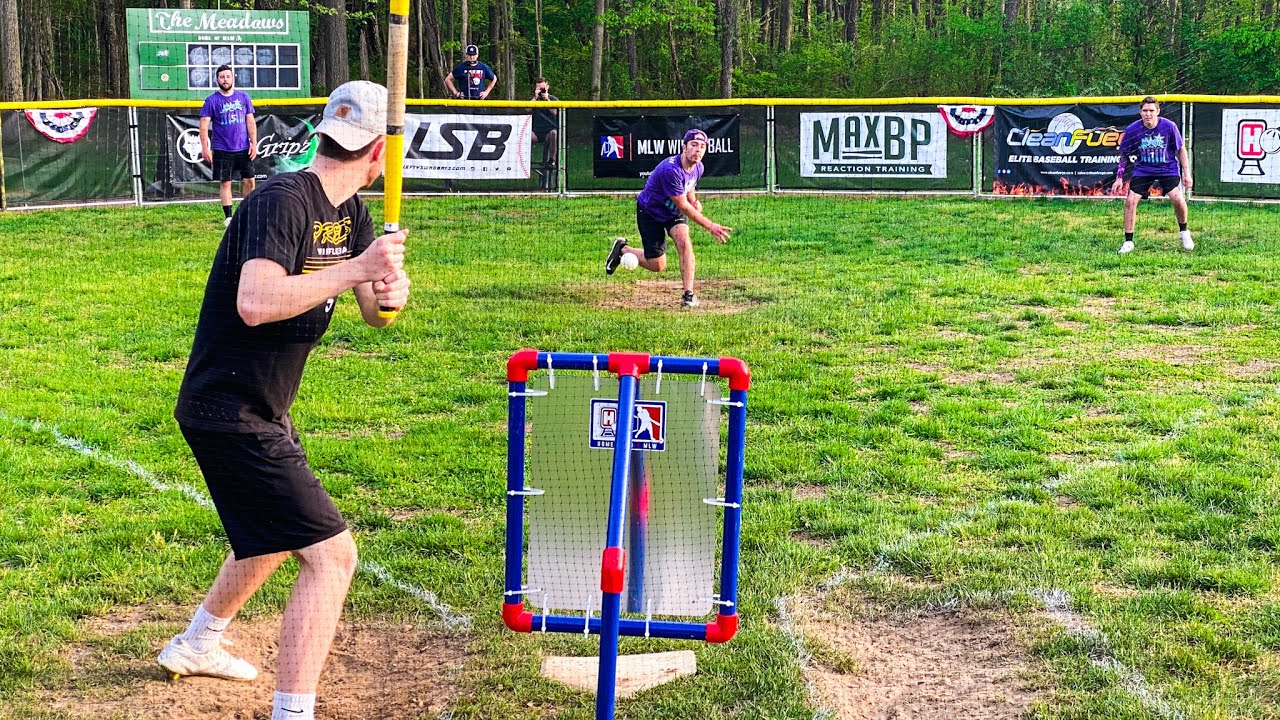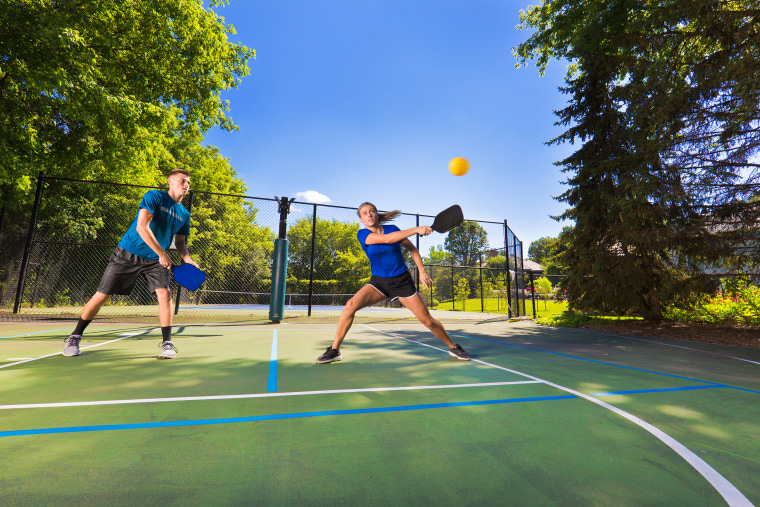
Pickleball is a game that mixes elements of badminton, tennis, and ping-pong into a fun, low-key sport. The game is played on a small, rectangular court, a size comparable to doubles badminton courts. Players can either play competitively or casually. Pickleball is a great way for friends and family to get some exercise, as well as having a lot of fun. Pickleball is great for families with small children as it doesn't require any equipment or large courts.
Pickleball has a few basic rules that help you understand the basics of the game. These include that there is only one lowered net, players serve from one side of the court, and that there are two service courts. There are many nuances that make the game unique.
Remember that a player can't use his hand to bounce a ball. To serve the ball, they must use a underhand stroke. This will allow them to control the ball better and increase their chances of getting it back to the opponent.

One rule to remember is that the receiving team cannot earn a point if the serving team makes a mistake. Faults occur when the ball hits the net, or out of bounds. The receiving team must be ready for the serve and stay on the baseline to avoid such situations. Failure to do this can result in their opponents hitting the ball towards their feet, making it difficult to return.
Pickleball is a game where each player must score at most two points. Pickleball is played from a diagonal spot on the court. Each player can choose to serve with either a fronthand or backhand. Alternatively, players can choose to serve from a no-volley zone or transition zone.
Although it sounds like science fiction, the court's transition zone is where it's most difficult to score one point. For a put-away shot to be considered, the player must hit and bounce the ball upwards. To make the shot, the player must run if the ball is not in the transition zone.
Apart from the rules, there are some idioms which can interfere with players' success. These idioms include the dropshot, the "dink" and the lob. Online resources are available to help you understand these idioms, and gain a better understanding of the sport.

Pickleball is an exciting and fun sport that anyone can play, no matter what level they are at pickleball. Find out about the history and play with some of the most prominent players. Find out how you can sharpen your skills, and boost your confidence. WeArePickleball has the resources you need to help make your game more enjoyable.
FAQ
Why is physical exercise important?
Our health is dependent on our physical fitness. Regular exercise is essential for maintaining our health, weight, strength, flexibility, cardiovascular system, and overall well-being. Exercise also helps us sleep better at night, reduces stress, improves self-esteem, and increases energy levels throughout the day.
How exercise and nutrition can help to live a happier life
Exercise is a great way to keep fit, lose weight, build muscle mass, and reduce stress. Nutrition is essential for energy, sleep and mood as well as overall health. You can live longer if you eat less meat and moderate alcohol intake, quit smoking, and engage in regular physical activity.
Which Is more important? Exercise, diet, sleep?
This depends on what you're trying to achieve. It is important to lose weight. To build muscle mass, exercise is crucial. Finally, sleep is the least important factor since it only affects how well you perform during the day.
How many hours sleep should I get each night?
The recommended amount of sleep varies depending on age, gender, and individual needs. Adults need between 7 to 9 hours sleep each night. Children and teenagers need 10 to 12 hours of sleep per night. As they age, however, this number falls.
Statistics
- Globally, 28% of adults aged 18 and over were not active enough in 2016 (men 23% and women 32%). (who.int)
- Adolescent girls were less active than adolescent boys, with 85% vs. 78% not meeting WHO recommendations of at least 60 minutes of moderate to vigorous intensity physical activity per day. (who.int)
- In 2018, the World Health Assembly agreed on a global target to reduce physical inactivity by 15% by 2030 and align with the Sustainable Development Goals. (who.int)
- Globally, 81% of adolescents aged 11-17 years were insufficiently physically active in 2016. (who.int)
External Links
How To
How to burn belly fat faster
When trying to lose weight, belly fat is often viewed as a problem. If you look at it, belly fat is actually a positive thing. Your organs are protected from being damaged by excess belly fat. Let's find out how to lose belly fat quickly.
Stress and inactivity are two of the major factors that cause us to store body fat. Because of its stimulation of the production hormone cortisol, stress can make us feel hungry continuously. Cortisol is responsible for an increase in insulin levels. The excess calories stored as fat are then stored by insulin. The release of adrenaline from our bodies causes increased appetite. Exercise helps to break down these extra calories.
There are many options to reduce belly weight. All of these methods can be used, depending on your budget. These tips will help you quickly get rid of belly fat.
-
Reduce the amount of food you eat. Eat smaller meals throughout the day rather than eating three big ones. This will result in fewer calories.
-
Make sure you drink plenty of water. Water helps flush out toxins from the body and keeps you hydrated. Drinking water before meals will help you feel fuller for longer, so you don't overeat.
-
Avoid unhealthy snacks. If you're looking for quick fixes, snack foods like chips, cookies, candies, etc. These tempting snacks might look appealing. These fattening treats are best avoided as they have too many empty calories and sugar. Choose healthier alternatives such as whole grains, vegetables, fruits, seeds, nuts and seeds.
-
Three times per week, strength training is recommended. Strength training builds muscle mass which burns more calories even while resting. It strengthens bones muscles ligaments, tendons and the heart.
-
Move regularly and stretch. Stretching can improve flexibility, mobility, and reduce back pain. Walking is great for burning calories.
-
Reduce alcohol intake. You should cut down on alcohol consumption. It adds no nutritional value to your diet.
-
Reduce your weight gradually. Finding out your current weight is the first step in losing weight. Then calculate your ideal weight by adding 5% to 10% of your total body weight. Once you have established your ideal weight, reduce your daily calorie intake by 500 to 1000 calories each day until you achieve your goal.
-
Avoid processed foods. These foods are high on sugar, salt, and additives. While processed foods can be convenient, they don't offer enough nutrients to ensure your health.
-
Don't skip breakfast! Eating breakfast improves concentration, memory, and energy level. You should have protein (such as eggs) and fiber (such as oats) for breakfast.
-
Have regular bowel movements. Constipation and irregularity cause bloating and gas. To prevent this, drink plenty of water and increase fiber intake.